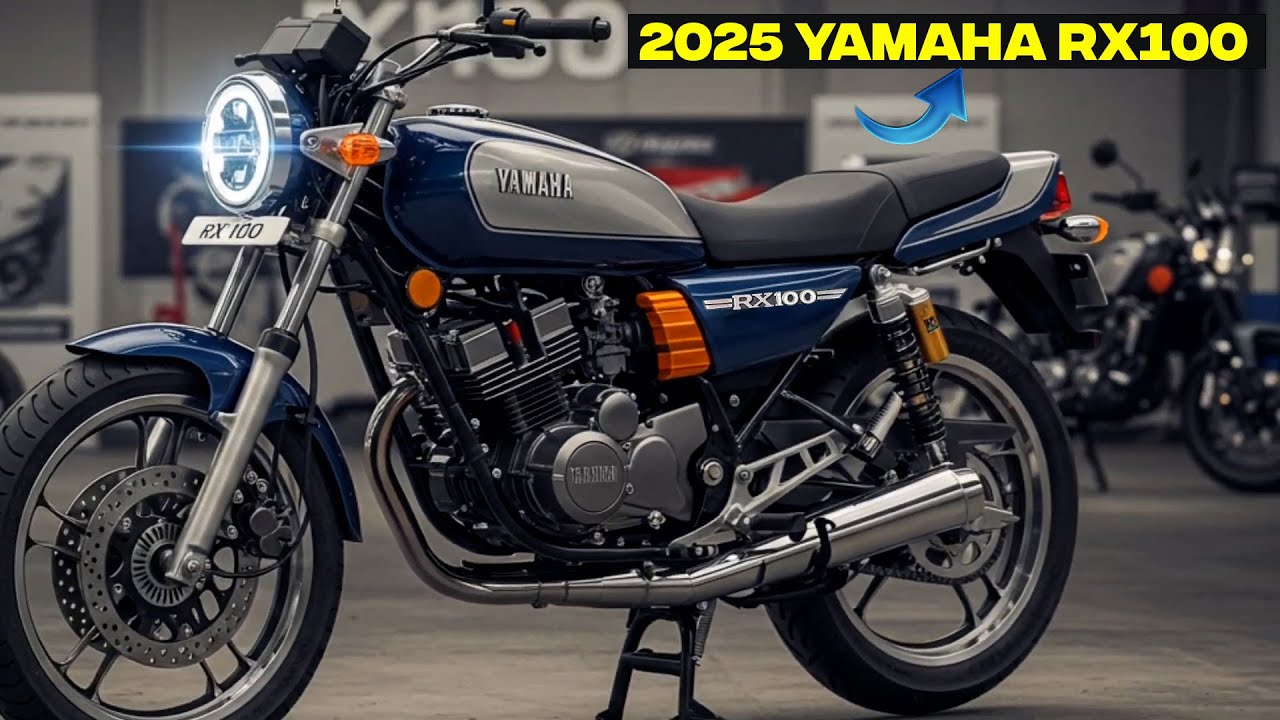Yamaha RX100 Bike: Good news for bike lovers! Yamaha has finally launched its most popular RX100 in a new avatar for 2025. The company has worked on the classic style of this bike, which is once again becoming the choice of the youth. This bike gives great horsepower and strong mileage along with many connectivity features. Also, the RX100 has retained its old-fashioned charm, including a bit of modernity in the form of a round LED headlight and sleek body panels with chrome finish.
Yamaha RX100 bike engine
The company has installed a high-performance, BS6 Phase-2 compliant, 149cc air-cooled engine in this bike which generates power of about 14 PS and torque of about 13.5 Nm. A 5-speed manual gearbox comes standard with the engine, allowing this bike to easily reach a maximum speed of 100 km/h. The company claims that this bike gives a mileage of about 55 km per liter.
Features of Yamaha RX100 Bike
In this latest launch, Yamaha has given many features for connectivity, which mainly includes digital instrument console, call/SMS alert, digital speedometer, Bluetooth connectivity, clock, mobile notification display, halogen headlight, pilot lamp, body graphics, engine kill switch, digital tachometer, USB charging port, pass switch, 15 liters fuel capacity, LED cowl light, low fuel indicator, digital trip meter, bulb turn signal lamp, digital odometer.
Yamaha RX100 Bike Price
The company said that the ex-showroom price of Yamaha RX100 2025 will be ₹ 1.25 lakh and this bike will be available in many new colors like Retro Red, Black Chrome and Classic Blue. According to sources, this bike is expected to be launched soon. The above information has been received from media and social media sources.
Yamaha RX 100 Bike 2025
The Yamaha RX 100 represents a special chapter in India’s motorcycling heritage. Its combination of accessible performance, distinctive character and simple reliability has created an emotional connection with riders that has taken it far beyond the role of mere transportation. In an age of increasing complexity and electronically controlled motorcycles, the purely mechanical nature of the RX 100 is a reminder of a time when the connection between rider and machine was more direct and clear.
Although environmental regulations and changing market preferences almost ended the production of two-stroke motorcycles like the RX 100, its influence remains throughout the industry to this day. Modern retro-styled motorcycles take inspiration from this era and attempt to recapture the simplicity and character that made bikes like the RX 100 so popular.
Yamaha RX 100 Bike 2025
The Yamaha RX 100’s impact on Indian motorcycle culture extends far beyond its production from 1985 to 1996. It created a dedicated fan base that has grown even more passionate in the decades since its discontinuation. Several factors have contributed to its enduring legacy:
Ease of Performance: The RX 100 democratised tremendous performance, offering thrilling acceleration and speed at an affordable price.
Modification Potential: The motorcycle proved to be a great platform for customisation, where enthusiasts changed everything from performance components to aesthetic elements.
Mechanical Simplicity: The simple design made it easy to maintain and repair, thereby increasing its reliability.
Distinctive Features: The unique exhaust sound, responsive handling and two-stroke power delivery offered a riding experience unlike any other motorcycle in its class.
Today, well-maintained motorcycles command prices many times higher than their original cost, and restoring these motorcycles has become a passion for both collectors and enthusiasts. Owners clubs dedicated to the RX 100 exist all over India, organising regular meets and rides to celebrate this iconic machine.
Yamaha RX 100 Bike 2025 Fuel
The RX 100 offered a fuel efficiency of around 40-45 kilometres per litre under normal riding conditions – which was reasonable for a two-stroke engine of the time, but less economical than its four-stroke counterparts. The 10.5-litre fuel tank offered a practical range of around 420-470 kilometres on two fills.
Maintenance requirements were simple, but more frequent than modern four-stroke motorcycles. Regular decarbonisation of the cylinder head, exhaust port and muffler was necessary to maintain optimum performance of the two-stroke engine. Regular cleaning of the air filter was essential, and the carburettor needed to be adjusted periodically to maintain a proper fuel-air mixture.
An important aspect of maintenance was the requirement for pre-mixed fuel – owners had to mix two-stroke oil with petrol in a specified ratio to ensure proper engine lubrication. Although this added complexity, it was a standard procedure for two-stroke motorcycles of the era.
